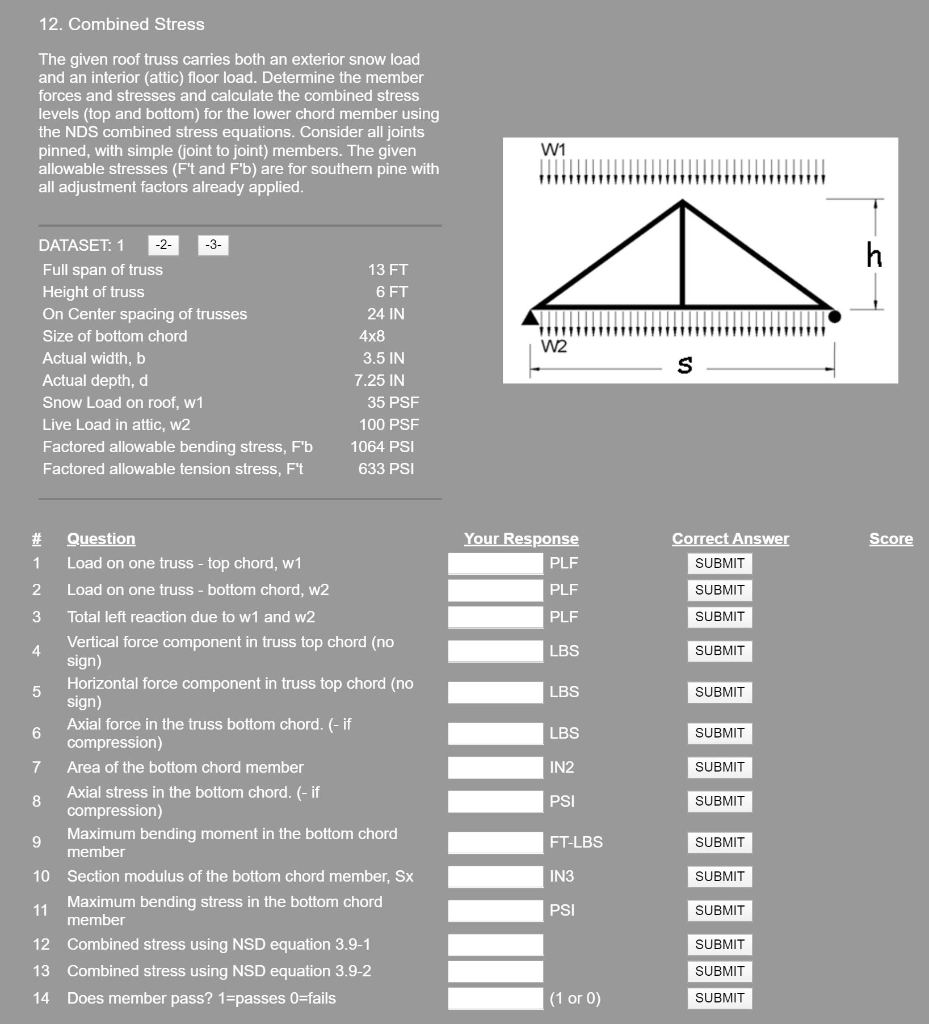Finally the truss calculator will compute the best dimensional method to connect the pieces of the truss with steel joints and a bridge.
How wide are roof truss chords.
Just as there are many types of roofs with many roof parts there are many different types of roof trusses this extensive article explains through a series of custom truss diagrams the different truss configurations you can use for various roofs.
Each can vary in overall geometry and in the choice of the individual elements.
Keep in mind that the higher the pitch the steeper the roof.
Under gravity loads the top and bottom chords of the truss provide the compression and tension resistance to overall bending and the bracing resists the shear forces.
The bolsters can have a wide variety of decorative profiles cut into their visible ends.
These are attached to the horizontal beam thus making up the triangle s base.
Flat the most economical flat truss for a roof is provided when the depth of the truss in inches is approximately equal to 7 of the span in inches.
Some of the commonly used types are shown below.
A wide range of truss forms can be created.
The same thing is true for the bridge of the truss.
The rise will be the elevation change over the 12 inches.
The run or the base number is 12 inches.
The dimensions of your structure will determine the angles formed by the truss s top and bottom beams or chords.
The same is true if we make it steeper.
This 26 span truss with a 4 12 roof pitch is the most economical truss we can build.
If we go any larger it will require more webbing inside the truss which will directly affect the cost of the truss.
While this article focuses on configurations we also have a very cool set of illustrations showcasing the different parts anatomy of roof trusses.
These steel joints are needed to support the overall truss.
A truss for a gable roof on one side of your home for example might need to be 15 feet 4 6 m long and 4 6 feet 1 2 1 8 m tall.
Its conventional triangular truss design is that the two sides are sloping up to the apex above with the struts known as the upper chords leading down from it.
Typically the upper chords have different lengths in this particular type of truss that make the apex off center.
The king post truss with extra bolsters builds on a favorite timber frame truss design with two added bolsters on the underside of the bottom horizontal chord for a heftier look.
These mirror image pieces added to the underside of the bottom chord can provide a stepped transition to the vertical wall plane.
The more complex the truss framework is the greater quantity of these joints will be required.
For example a slope of 6 12 means for every 12 inches of horizontal distance the slope of the roof will rise 6 inches vertically.
Steeper roof pitches require longer webs which add to the cost.

